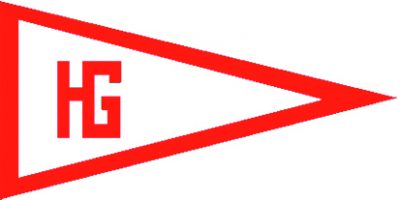
![]() Hull was known for many years as the ‘Third Port’ of Great Britain after London and Liverpool due to its great volume of trade. Several fleets had their home at this port on the Humber including Ellerman’s Wilson Line, Associated Humber Lines, Sea Steamship Co. Ltd. and the London and North East Railway Company (LNER), later the British Transport Commission (Eastern Region). The deep sea towage fleets of United Towing Ltd. and the big Icelandic deep sea fishing fleets also sailed out of Hull. As the name of this Hull coastal shipping company implies, the names of the ships of the Hull Gates Shipping Co. Ltd. were taken from the many gates of the city e.g. the Beverley Gate was the main entrance to the walled city, where Parliamentary Governor Sir John Hotham in 1642 famously refused entry to King Charles I. King Charles I and the newly formed Parliament had appointed different nobles to govern the seaport, and a siege began, thus setting off the start of the English Civil War and open conflict between Royalist and Parliamentary forces. Hull Gates Shipping Co. Ltd. was established on 22nd January 1937 and during most of the fifty years of its existence it was owned by the Craggs family of shipbuilders.
Hull was known for many years as the ‘Third Port’ of Great Britain after London and Liverpool due to its great volume of trade. Several fleets had their home at this port on the Humber including Ellerman’s Wilson Line, Associated Humber Lines, Sea Steamship Co. Ltd. and the London and North East Railway Company (LNER), later the British Transport Commission (Eastern Region). The deep sea towage fleets of United Towing Ltd. and the big Icelandic deep sea fishing fleets also sailed out of Hull. As the name of this Hull coastal shipping company implies, the names of the ships of the Hull Gates Shipping Co. Ltd. were taken from the many gates of the city e.g. the Beverley Gate was the main entrance to the walled city, where Parliamentary Governor Sir John Hotham in 1642 famously refused entry to King Charles I. King Charles I and the newly formed Parliament had appointed different nobles to govern the seaport, and a siege began, thus setting off the start of the English Civil War and open conflict between Royalist and Parliamentary forces. Hull Gates Shipping Co. Ltd. was established on 22nd January 1937 and during most of the fifty years of its existence it was owned by the Craggs family of shipbuilders.
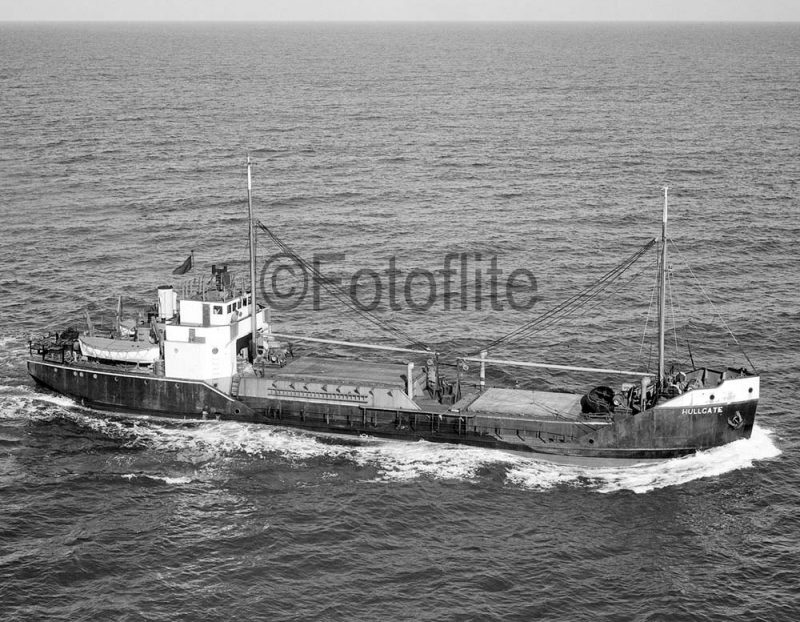
The Craggs Family
Robert Craggs (1799-1871) had begun shiprepairing at Stockton in 1825 and soon moved into shipbuilding at this inland Tees port that quickly achieved a reputation for building many fine ships at several yards. Shipbuilding and shiprepairing of wooden sailing ships was founded by Craggs at the Tees Dockyard in 1832, and the first iron hulled ship was completed in 1875. The yard moved to a site in 1896 that later became Dent’s Wharf and was adjacent to the big yard of Sir Raylton Dixon. Robert Craggs and Sons was registered on 29th December 1900 to acquire the business of shipbuilding of Henry Foxton Craggs (1832-1915) and Ernest Hall Craggs, born in 1864. The famous naval architect Sir Joseph William Isherwood (1870-1937) was born in Hartlepool and joined the Board of Directors of Robert Craggs and Sons in 1907. He was famous for his longitudinal system of framing and other advances in ship design, but the yard unfortunately closed during a trade slump after its last ship was completed in July 1909.
Herbert Foxton Craggs (1869-1955) and a relative of Robert Craggs, was born in Stockton to George Craggs and his wife Agnes Craggs. He married Gwendoline Williams at Cardiff in 1899 and they had two sons, Kenneth Foxton Craggs and Frank Foxton Craggs.
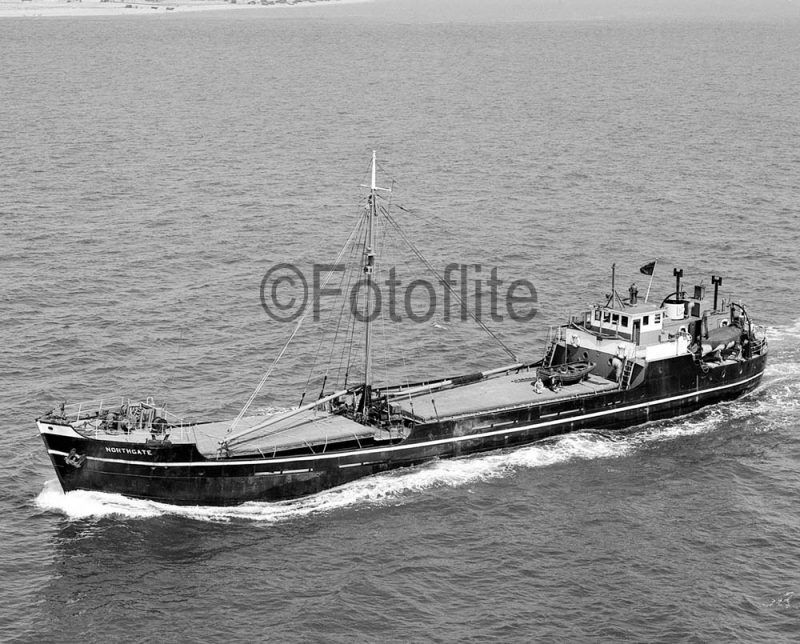
The famous yard of the Goole Shipbuilding and Repairing Co. Ltd. was founded in 1901 by Herbert Foxton Craggs and his father George Craggs along with local shipowner C. Pyle, with Herbert becoming Chairman of the yard in 1922. During the trade slump of the Depression, Herbert and some business partners acquired the Willington Quay yard on the Tyne of Cleland’s (Shiprepairers) Ltd. for £3,250, with Cleland’s (Successors) Ltd. registered on 31st October 1932. The yard opened for business during 1934/35, bringing some relief to the tens of thousands of unemployed men on the Tyne.
An order for a coaster of a Goole design of 410 grt was completed as Hullgate in February 1937, with an exact sister following in February 1938 as Mytongate, the first coasters of the Hull Gates Shipping Co. Ltd. Herbert Foxton Craggs died in 1955, and was succeeded as Chairman of Goole Shipbuilding and Repairing Co. Ltd. by his son Kenneth Foxton Craggs.
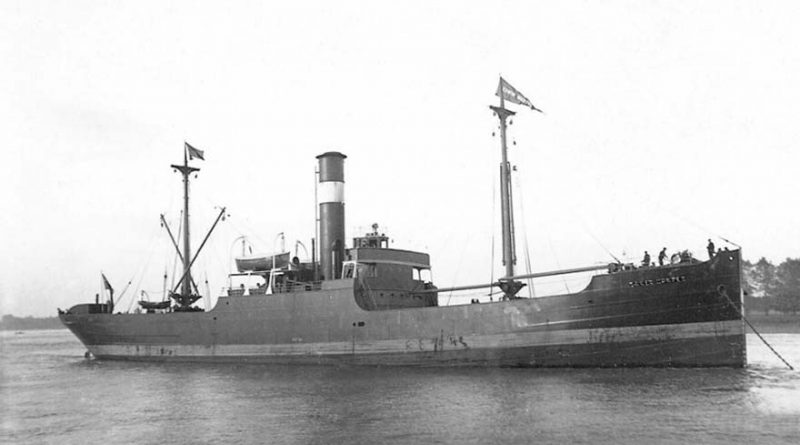
World War II
The funnel colours of the new coastal shipping company of yellow with a narrow black top and a white pennant with red borders showing a central conjoined ‘HG’ were painted grey in September 1939. The managers of the new company were Craggs & Jenkin Ltd. at 62, George Street in Hull, with the principals being Stanley Foxton Craggs and J. N. Jenkin. Stanley Foxton Craggs served as a Flight Lieutenant in the R.A.F. from 1st March 1944 and as a Squadron Leader in 1945, returning after the war to manage the company as Chairman. He lived near the village of Swanland seven miles west of Hull near North Ferriby, and served as a Vice President for many years of the local annual Swanland agricultural show. Swanland today is near the north entrance to the Humber Suspension Bridge.
Hullgate was lost early in the war on 14th January 1940, sinking after a collision with the steamer Moyle near Borsele in the Scheldt while on a voyage from Bruges to Antwerp in ballast. She was replaced by the new motor coaster Northgate in January 1941 of 429 grt and 530 dwt, launched from the Cleland’s yard on 3rd September 1940 and fitted with a six cylinder Crossley diesel engine, replaced in 1954 by a four cylinder British Polar diesel. She had dimensions of length 161.0 feet, moulded beam of 26.1 feet and loaded draft of 10.0 feet.
An old engines ‘midships collier named Ightham, completed in June 1914 by the Wood, Skinner yard at Gateshead as Edwin Hunter of 1,337 grt, and a Hull and Goole owned ship through and through with successive names of Abbeville, Wharfedale, Neville and Ightham, was purchased by the Hull Gates Shipping Co. Ltd. in 1941. She was a raised quarterdecker in design with derricks on two masts and with a fo’c’stle of length 27 feet, and a quarterdeck of length 140 feet, with a triple expansion steam engine by George Clark Ltd. of Sunderland. She had been detained at Nordenham in Germany on the outbreak of World War I, and was used as a collier by the Imperial German Navy from 1916. She had also spent most of the month of September 1940 beached on Derbyhaven Bay after being in collision during a voyage from Cardiff to Oporto. She also became a war loss on 7th October 1942, sinking approximately a dozen miles east of Spurn Head after striking a mine while on a voyage from the Thames to Sunderland in ballast. Fortunately, her crew of eighteen plus six gunners were all rescued.
One of the twenty five examples of the Empire ‘F’ design of standard coaster, Empire Facet of 410 grt laid down as Chant 38, was managed by the company for the Ministry of War Transport (MOWT) from completion in November 1944 by the Goole yard. She was renamed Hullgate (2) on purchase in 1946, and served the company well in the British coastal trades for sixteen years until sold to Greek owners of Christos Dendrinos and G. Varouchas of Piraeus in 1962 and she was renamed Agios Nektarios. Her later demise outside Patras harbour came on 18th March 1963 after she had burned in the Ionian Sea with a cargo of inflammable cotton, and was abandoned and then towed into the Gulf of Corinth by a Yugoslav steamer but sank while on a voyage from Piraeus to Trieste.
Post-War Years
A coastal engines aft bridge ‘midships steamer Empire Chelsea, completed in 1945 by John Lewis & Sons Ltd. at Aberdeen for management by O. Dorey & Sons of Guernsey, was managed in 1946 and purchased in 1947 and renamed Humbergate. She was an easy trimming collier with two holds, number one hold being short in length, and had three derricks, each with a steam winch for a single derrick. A service speed of ten knots was obtained from a triple expansion steam engine, and she served the company well for eight years until she was sold in 1955 to the Springfjord Shipping Co. Ltd. of London to become Springwear. Another addition in 1946 was Friargate of 945 grt completed at Goole with a six cylinder Newbury diesel and dimensions of length 209.4 feet, moulded beam of 31.5 feet and depth of 13.7 feet, and sold in 1950 to become Yarmouth Trader for the Great Yarmouth Shipping Co. Ltd. of Goole. A fleet of five coasters in 1949 included the new Kingsgate of 549 grt from the Cleland’s yard, which served for a long twenty five years until her sale in 1973 to Losinj Plovidba of Rijeka to become Valum.

A fine motor coaster was completed in May 1952 at the Cleland’s yard as Beverleygate of 1,607 dwt with two masts, three derricks, two white lifeboats, and of the bridge ‘midships, engines aft design. She was a raised quarterdecker with three holds and three hatches, and had a white line on her black hull with red boot topping. She had dimensions of length 219.3 feet, moulded beam of 35.2 feet, and depth of 13.3 feet, with a fo’c’stle of length 25 feet and a combined quarter deck and poop deck of length 136 feet. She was part electrically welded with a cruiser stern, and was powered by a six cylinder two stroke British Polar diesel engine to give a service speed of eleven knots. She was sold in 1958 and renamed Kyle of Lochalsh, becoming Humberbrook in 1965, and Christina TH in 1967 for Greek owners.
A fleet of ten coasters was being traded in 1955, and included the newly purchased Hesslegate of 547 grt, completed by Cleland’s in 1947 as Clonmore for Samuel Morris Ltd. of Newcastle. She was powered by a six cylinder Crossley diesel engine and was lengthened in 1959, and then sold in 1966 to Greek owners to become Christophoros II. The new coaster Royalgate of 546 grt and 700 dwt was also in the fleet, launched on 30th June 1953 and completed in October 1953 by the Goole yard on dimensions of overall length 188.7 feet, moulded beam of 27.6 feet, and depth of 9.4 feet, and was powered by a seven cylinder two stroke type M471 British Polar diesel engine developing 545 bhp at 300 rpm. She carried containers from Glasson Dock in Preston to Douglas on the Isle of Man later in her career in 1969, and was sold in 1973 to Losinjska Plovidba of Rijeka to become Merag. Two old time coasters were also in the fleet, one built back in Hamburg by J. Oelkers as Lucy in 1922 as a barge of 190 grt, but was fitted with an oil engine in 1935, and purchased in 1953 and renamed River Witham, becoming Rivergate in 1955. The other was a coaster of 246 grt built in March 1935 at Goole and purchased in 1954 and renamed River Trent, becoming Friargate (2) later in the year.
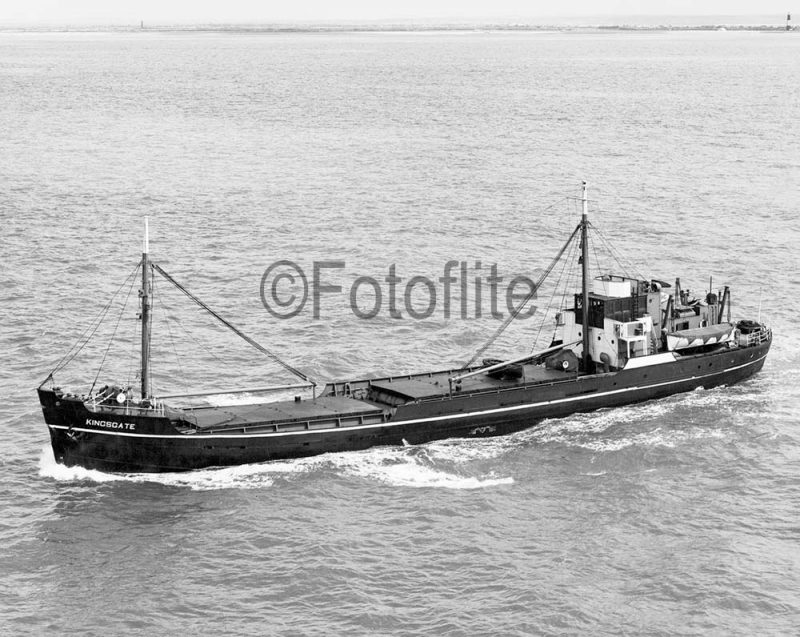
A fleet of ten coasters was also operated in 1958 included the new coaster Heathergate of 597 grt, launched from the Cleland’s yard on 14th November 1956 and completed in January 1957. She had dimensions of length 179.9 feet, moulded beam of 28.9 feet, and depth of 11.9 feet, and was powered by a seven cylinder two stroke British Polar diesel engine. Management remained with the Hull Gates Shipping Co. Ltd. after she was registered under the Glynwood Navigation Co. Ltd., but she returned to the ownership of Hull Gates Shipping Co. Ltd. in 1968 and served until sold in 1974 to Cypriot owners to become Vulcan. Heathergate was wrecked off Sitia Bay on Crete on 8th January 1979, and had been built as a sister of Royalgate of 1953. The Goole yard had also been busy during 1957/58, launching ten ships in two years of a total of 9,586 grt, or an average of 958 grt for each ship.
Three sister small single hold motor coasters of 200 grt were completed during 1959/61 as Queensgate, Humbergate (2) and Paullgate. Two of the trio were the first vessels launched sideways from the Cleland’s yard into the Tyne after the yard was extended at a cost of £1 million to provide two new sideways launching berths and an extended main slipway for stern launches with the workforce increased to 700 men. The trio had dimensions of length 117.9 feet, moulded beam of 25.3 feet, and depth of 8.5 feet, and were powered by Lister Blackstone Marine diesel engines. Humbergate was unfortunately lost on 2nd October 1963 when she sank seven miles west of Trevose Head on a voyage from Porthoustock to Bristol in a storm with a cargo of stones.
Queensgate was sold in 1965 to the Light Shipping Co. Ltd. of Greenock for trading to the Western islands as Polarlight, and was later lost on 11th June 1980 after a collision 36 miles west of Ijmuiden in fog while on a voyage from Amsterdam to Great Yarmouth under the name of Queenford. Paullgate was named after the village of Paull where she was built by J. R. Hepworth Ltd., the yard later became the Hepworth Shipyard Ltd. of Paull in 1985. She was also sold to the Light Shipping Co. Ltd. of Greenock and renamed Moonlight, but was lost in the southern approaches to the North Channel on 9th September 1970 while on a voyage from Runcorn to Carrickfergus after her cargo had shifted in a storm, two crew members being unfortunately lost.

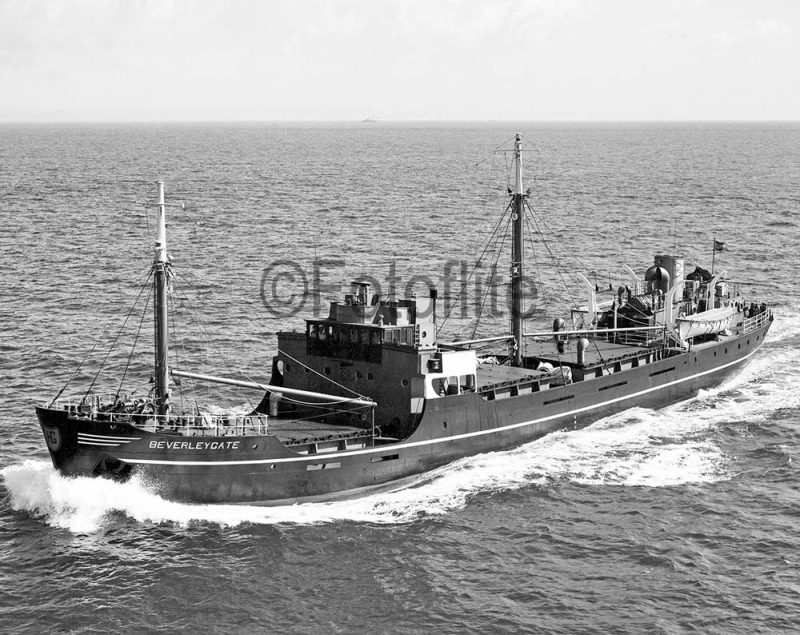
Hull Gates Shipping Co. Ltd. ships often loaded coal at Goole, and thus in 1963 it had three offices, the Hull office at Ruskin Chambers in Scale Lane, the Goole office at Adam Street, and the Grimsby office at Royal Dock Chambers. Foxtongate of 1,150 dwt was completed at Goole in the same year of 1963 on dimensions of length 197.0 feet, moulded beam of 30.3 feet, and depth of 11.1 feet, and was a raised quarterdecker with two holds, two hatches and two masts, and was given a blue hull. She was powered by Lister Blackstone Marine diesels, and was sold in 1974 to Marpro of Goole and renamed Mariyos I, later in 1983 becoming Celtic Rose of Mistpride Ltd. (R.F. Quinn) of Goole. She sailed to Funchal in Madeira in 1989 for conversion into a sand carrier from the island of Porto Santo under the name of Ilha Dourada, and was wrecked in a storm at Madeira on 29th October 1993.
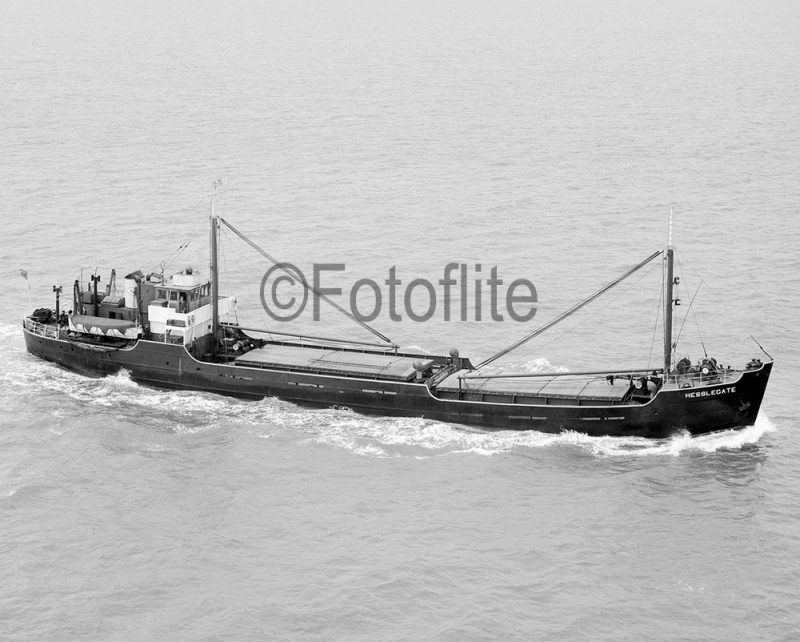
Northgate (2) of 760 dwt came from the Goole yard in 1964, and Irishgate of 965 dwt came from the Cleland’s yard in 1965 to maintain the company fleet at seven motor coasters, with Craggs and Jenkin Ltd. having an established reputation of shipbrokers, shipping and forwarding agents, dealing in all kinds of cargo in the U.K. and near Continental trades up to a maximum of one thousand tonnes. Irishgate was sold to J. Rix of Hull in 1974 and renamed Jemrix, and was lengthened in 1986, and later sank on 7th January 1996 when 150 nautical miles west of Tampa while on a voyage from Mobile to Port Esquival with sulphates. Northgate of 1964 was sold in 1979 to the Shamrock Shipping Co. Ltd. and renamed Trostan with a red and blue funnel, and in 1981 became Pekari for a succession of Belfast owners, and in 1989 became Elmham under the St. Vincent and Grenadines flag, and later Tia and Beatrice II during the Millennium year. She was still in existence in 2011 and reported as sailing.
The Craggs family sold the Goole and the Cleland’s yards to Swan Hunter Shipbuilders Ltd. in 1967 to become part of their Small Ship Division. The Goole yard then received orders from Swan Hunter for tankers, stern trawlers, sand dredgers and coastal dry cargo ships until the yard was nationalised in July 1977 as part of British Shipbuilders and eventually was closed on 27th April 1984. It was briefly revived by Cochranes of Selby who built four more ships until 1987, after which the yard was used for shipbreaking work. Cleland’s yard also became a member of British Shipbuilders in July 1977 until the last ship Steyning was launched for Stephenson Clarke Shipping Ltd. on 9th August 1983 and completed on 20th October 1983. The yard was then closed and has been used since by a variety of oil rig and offshore companies.
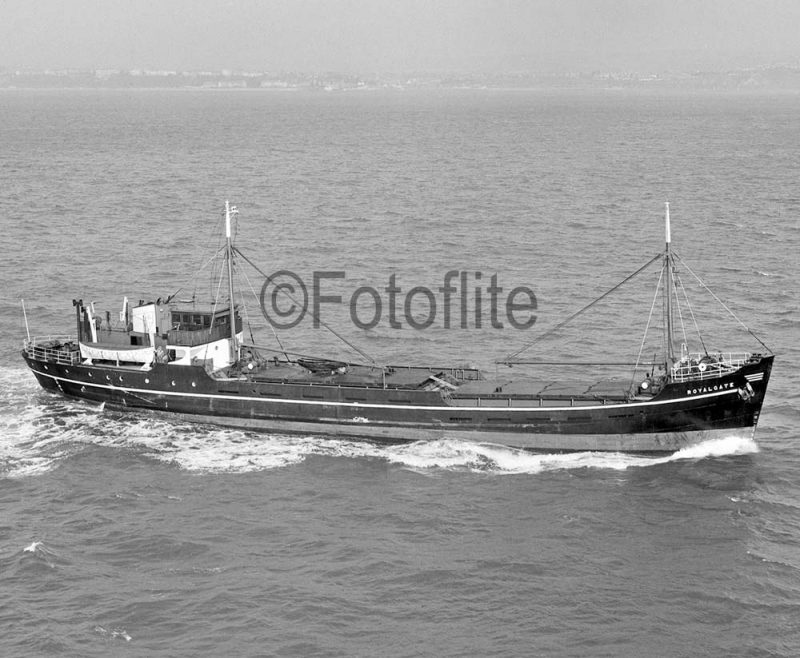
Diversification into coastal tankers resulted in two sister tankers of 2,907 dwt being completed during 1969/70 as Humbergate (3) and Hullgate (3). They were equipped with bow and stern thrusters by the Richard Dunston & Co. Ltd. yard at Hessle, and were powered by Ruston English Electric diesels to give service speeds of 13.5 knots. Hullgate (3) was destroyed in a bad explosion and fire at Milford Haven on 23rd December 1981 and the wreck was broken up at Neath in February 1982. Humbergate (3) after changes to the ownership of the Hull Gates Shipping Co. Ltd. was sold in 1990 and renamed Korinthia, and later sailed out to Nigeria under the name of Current and was broken up in May 2003.
Change Of Ownership
The Hull fishing industry was in serious decline in the late 1960s and early 1970s after the disastrous ‘Cod Wars’ during 1958 to 1976 off Iceland had deprived them of their Icelandic fishing grounds. The Icelanders extended their fishing limits from twelve to two hundred miles in 1972 to protect their fish stocks. Sir Fred Parkes, born in Boston in 1887, and later his son Sir Basil A. Parkes and grandson Neil Parkes, had built up a substantial fishing fleet under Boston Deep Sea Fisheries Ltd. in Hull, Grimsby, Fleetwood and Lowestoft, and wished to diversify in 1972, and thus purchased the Hull Gates Shipping Co. Ltd. via the holding company of Fred Parkes (Holdings) Ltd. The Fred Parkes Shipping Co. Ltd. of Royal Dock at Grimsby then acted as managers of the new motor coaster Parkesgate of 1,133 dwt from the J. Bolson & Sons yard at Poole in 1972 and fitted with twin Lister Blackstone Mirlees diesel engines, with the new owner changing the funnel colours to red (later blue) with a black top and a white circular logo.
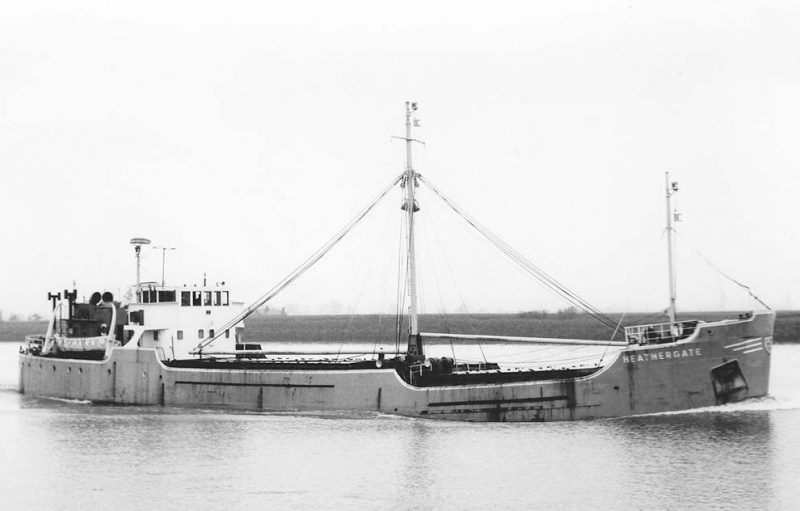
Fishing trawlers such as Mohave, Shawnee and Sioux also began to be registered under the Hull Gates Shipping Co. Ltd., as well as second hand coasters renamed as Nethergate of 600 dwt during 1975/76 and completed as Hermann Elsen in 1955, and another renamed as Wellowgate of 488 grt during 1974/75, completed in 1967 as Susanne Scan, and named after a street junction near Grimsby Docks. Nethergate after sale later became Llanishen in 1987 and suffered an explosion and fire eight nautical miles west of the Needles on 12th August 1989 and was broken up at Milford Haven during the following month.
The new owner began an expansion into trading to West Africa with the purchase in March 1974 of three sister general cargo ships of 4,180 dwt with fixed guides container capability and equipped with a single gantry crane. They had been completed in 1969 by the Neptun yard at Rostock as Bruni, Hansel and Jenka for Jorgen Brunvall of Bergen, and were renamed Fredericksgate, Simonsgate and Bengate respectively. They had dimensions of length 316.3 feet, moulded beam of 48.0 feet, and loaded draft of 20.1 feet, and were powered by an Atlas MaK diesel engine of 3,000 bhp to give a service speed of thirteen knots. The venture was not a success with Fredericksgate sold off later in August 1974 to Turnbull Scott Shipping Co. Ltd. and renamed Eskdalegate, then to Cancyp Maritime of Cyprus in 1977 and renamed Elisabeth, and was renamed Staropolye and then Lisa during 2004, and under the latter name she arrived for breaking up at Aliaga in Turkey at the end of October 2012. Simonsgate was sold off in 1976 and renamed Scol Rover, and after four more changes of name was broken up at Aliaga in December 1993 as Megas Alexandros, and Bengate was sold off in 1976 and renamed Meteor and broken up in India in 2001.
The Fred Parkes Shipping Co. Ltd. was managing and operating six coastal tankers in early 1981, with Humbergate (3) and Hullgate (3) dating from 1969/70, and four new twin funnelled coastal tankers named Eastgate, Westgate, Northgate and Irishgate of 3,375 dwt from the Kanrei Zosen yard at Naruto in Japan. The delivery voyages from Japan of this quartet entailed bunkering stops at Penang, Mokha in Yemen, and at Gibraltar to reach Hull. They were all on charter to Rowbotham Tankships Ltd. for coastal U.K. and Continental trading, but on 8th December 1981 the Hull Gates Shipping Co. Ltd. and Fred Parkes Shipping Co. Ltd. were sold to Turnbull Scott Shipping Co. Ltd. Soon after the purchase Hullgate (3) became a constructive total loss at Milford Haven, leaving Turnbull Scott Shipping Co. Ltd. with five similar coastal tankers all on charter to Rowbotham Tankships Ltd. However, on 29th November 1982 four of these coastal tankers were sold to the charterer, with Turnbull Scott Shipping Co. Ltd. retaining Irishgate with a long demise charter to Rowbotham.
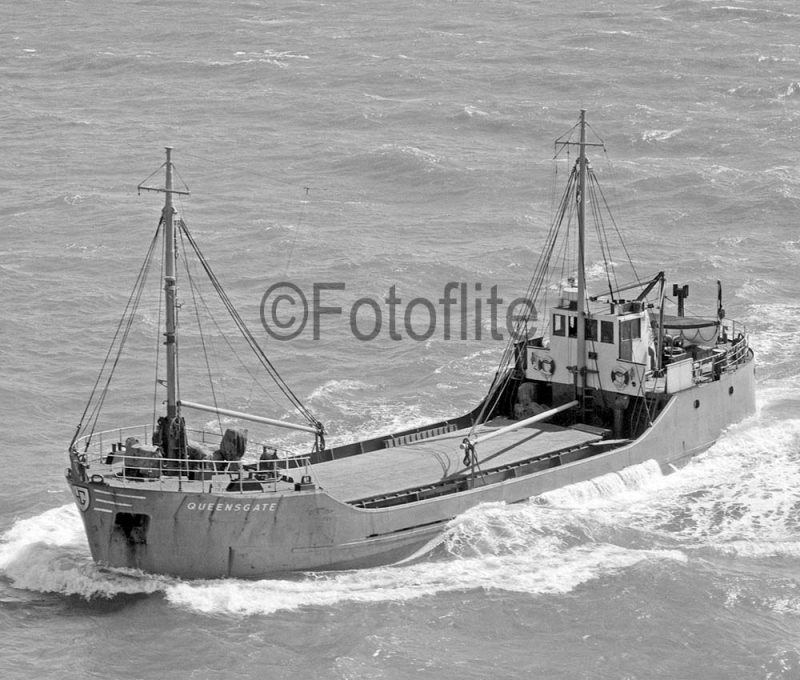
P. & O. Bulk Shipping Ltd. acquired 50% of Rowbotham Tankers Ltd. on 3rd May 1990 for £11.2 million, with the other half owned by Marine Transport Lines of New York until this half interest was also acquired by P. & O. Bulk Shipping Ltd. on 15th January 1993. The famous name of Rowbotham in coastal shipping disappeared with the formation of P. & O. Tankships Ltd., a subsidiary of P. & O. Bulk Shipping Ltd. The name of the Hull Gates Shipping Co. Ltd. had survived for a few more years as a subsidiary of other companies until it finally disappeared into the realms of maritime history in 1988.
Two former directors of the Hull Gates Shipping Co. Ltd. and the Fred Parkes Shipping Co. Ltd., Jack Bayram and Alex Fairclough, set up Ajax Marine of Grimsby in 1994 to manage two new deep sea tankers of 38,000 dwt named Jasmine B and Orchid B, plus the tanker Gardenia B of 19,950 dwt. This trio traded worldwide including the West Coast of the U.S.A., Mediterranean and Red Sea, and around South America. James Fisher and Sons Ltd. of Barrow purchased the fleet of P. & O. Tankships Ltd. on 30th December 1996 for £52 million, and three of the last quartet of coastal tankers of the Hull Gates Shipping Co. Ltd. were still trading in 2017, Eastgate as Atlantic Trader under the Panamanian flag, Westgate as Bebek E under the Turkish flag, and Northgate as East Wind under the Liberian flag, with Irishgate broken up at Aliaga in Turkey in February 2012 under the name of Mistra Bay, having been employed in her later years on coastal Malta trading.
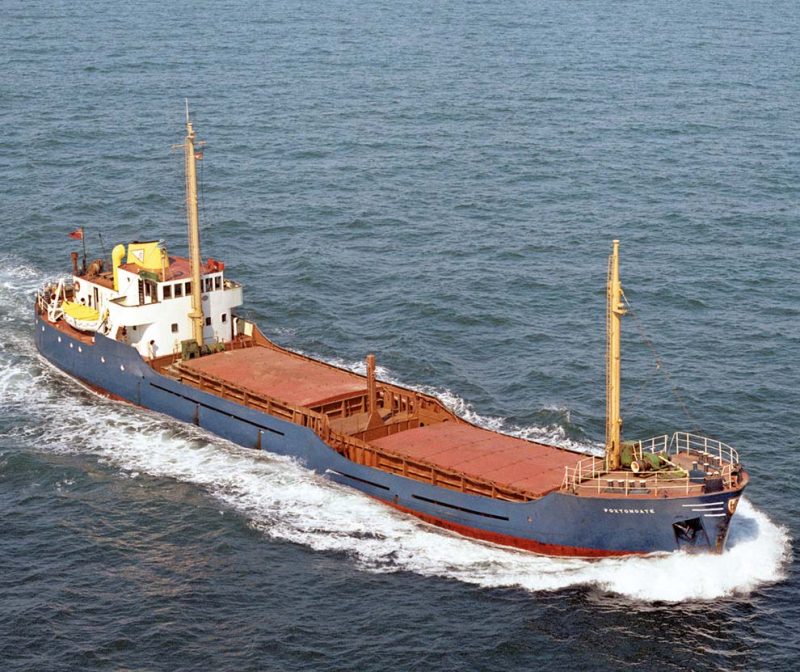
Postscript
The Hull Gates Shipping Co. Ltd. owned forty coastal dry cargo ships and tankers of up to 4,000 dwt during the fifty years of its existence. It was one of many similar British coastal shipping companies that formed the backbone of the British coastal trades for over a century. Coasters were very important in moving cargo from smaller ports to larger ports or vice-versa, and ten coasters could be seen entering a British port while one waited for one deep sea vessel to also enter port. The Craggs family were very important in British shipbuilding history and in British coastal shipping for almost two centuries. They owned the Goole Shipbuilding and Repairing yard and the Cleland’s yard at Willington Quay on the Tyne, both with great reputations for building fine ships. The sideways launches at Cleland’s yard were the only such launches that I was privileged to see, even though they were common in Holland, Australia, the U.S.A. and many other parts of the world.
The Parkes family made the correct decision to diversify from their trawler business in 1972, as by 1985 Boston Deep Sea Fisheries Ltd. at four fishing ports had a fleet of only fifteen trawlers of up to 390 grt in Boston Argosy, Boston Comet, Boston Corsair, Boston Halifax, Boston Hornet, Boston Lincoln, Boston Sea Cobra, Boston Sea Fury, Boston Sea Gazelle, Boston Sea Harrier, Boston Sea Knight, Boston Sea Stallion, Boston Sea Vixen, Boston Stirling and Boston Whirlwind. The Parkes family are still in business today, with the current Managing Director, Mark Parkes, great grandson of the founder Sir Fred Parkes, operating an air services company called Bostonair. The company had a small office in Swanland in 2006 before moving to bigger premises in Beverley.
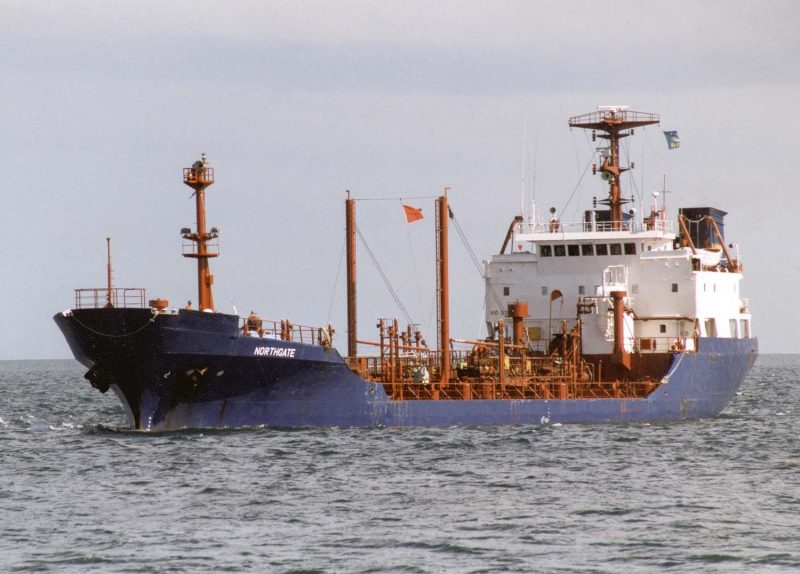
Hull is a very vibrant city today, with the landmark ‘The Deep’ as a very interesting and varied aquarium, with a tremendous view of the Humber from the top of the sloping ramp of the aquarium tank. The Spurn Lightship was built in 1927 and is on display in a prominent position in Hull Docks, and is 100 feet in length and 24 feet in the beam, with fascinating exhibits inside on what life was like for the crew onboard at the mouth of the Humber for prolonged periods. Hull Maritime Museum, the former Dock Offices facing Queen Victoria Square, has much history on merchant shipping, fishing and whaling explained in excellent galleries. The Hull Tidal Barrier crosses the river Hull, and is a large and imposing structure opened in 1980 to prevent a reoccurrence of the severe flooding suffered by the city in 1969. Victoria Pier was on the site of a mediaeval port, with Victoria Dock built here at the start of the 19th century together with a ferry crossing to New Holland across the Humber dating from 1825. The nearby berths of the P. & O. North Sea Ferries are an added attraction.





Comments
Sorry, comments are closed for this item